What is oil radish and how to grow it?
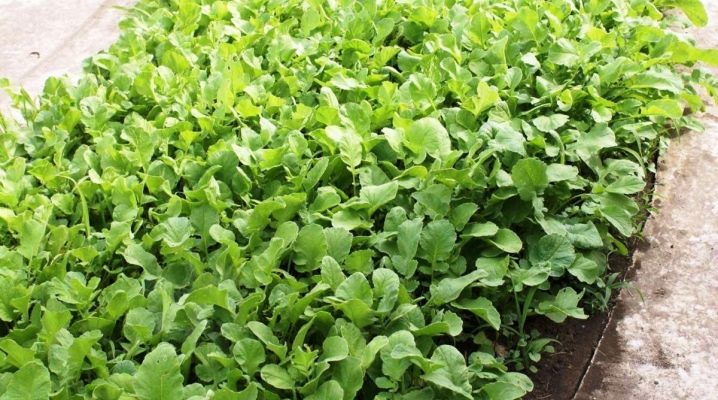
Finding out what oil radish is and how to grow it, you can get a good result. In addition to the seeding rate of seeds per hectare, you will need to know exactly how to sow it according to the rules. And also it is necessary to deal with the yield of this plant, and with the cultivation technology during cultivation, and with the best varieties.
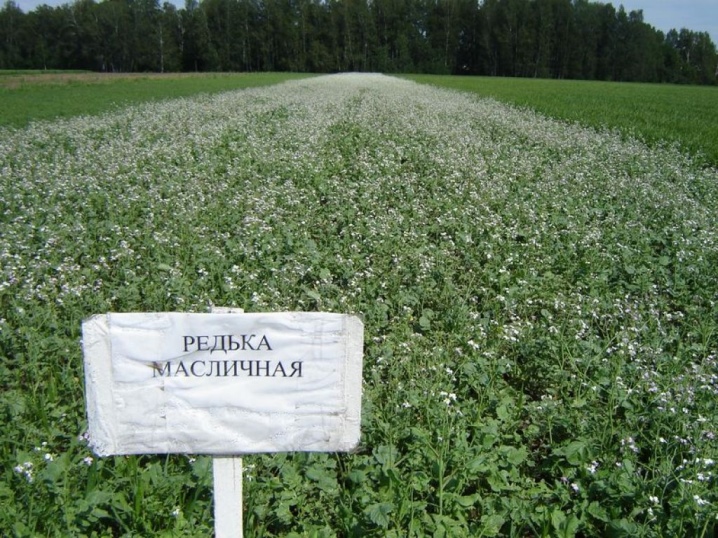
general description
It's worth starting with the fact that oil radish is a typical herbaceous plant with a one-year development cycle. This representative of the cruciferous family has bright green leaves, rather powerful shoots up to 2 m high. The foliage of the oil radish has an atypical geometric shape, it is always heavily indented. It is also unusual that instead of the root crop expected by the name of this plant, the fruit turns out to be a seed pod.
The flowers of the oil radish are not too large. They are characterized by lilac, white and pink colors. In terms of yield, such a plant is noticeably ahead of white mustard, rye and lupine. He is deservedly considered an excellent green manure. The harvest of green mass is created in 35-45 days.
These greens contain a fairly high amount of protein. And also there is a high content of fat, ash components. At the same time, there is not so much fiber, but there is a large amount of trace elements and vitamins.
In terms of the quality of green mass, oil radish is close to compound feed and legumes. During the summer in the forest-steppe, it is capable of producing up to 3 harvests.
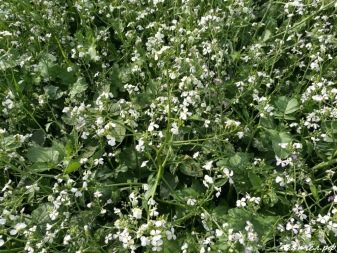

The plant can easily survive late sowing. Protein-laden plant matter will be produced in September and October. Oil radish is able to adapt even to extreme conditions, including in the Arctic Circle. The yields are distinguished by enviable constancy. Regeneration is the strong point of this culture; it has a growing season of 90 to 100 days.
Oilseed radish lives up to its name: it can be grown as an oilseed crop. This species is characterized by the formation of a tap root system with powerful branching. Inflorescences are loose brushes. Flowering can last up to 30 days, while the flowers are actively visited by bees.
Oil radish pods do not crack, 1000 seeds can weigh 7 to 12 grams. The culture is able to survive a persistent cold snap down to –4 degrees. If the temperature remains at the level of 5-6 degrees for a long time, the growing season will continue. The soil requirements of this plant are low, planting is possible even on dense heavy clay.
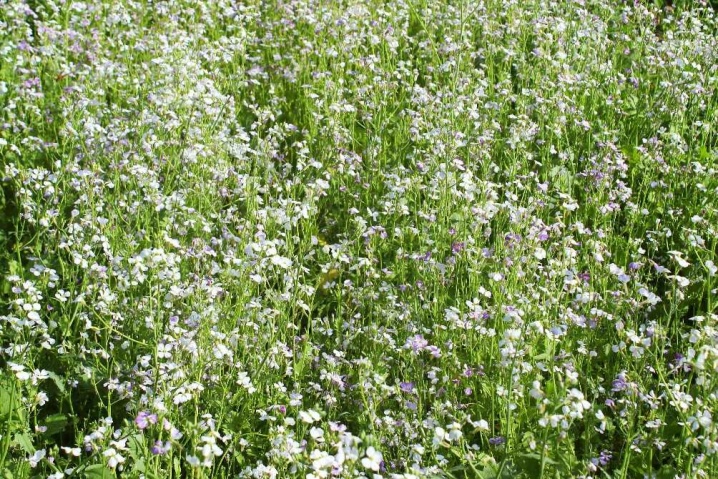
Popular varieties
Among the types of oil radish, the Brutus variety stands out favorably. It is classified as a green manure suitable for cultivation throughout the growing area of this plant. The declared productivity of the collection of 700 centners of green mass per 1 hectare. The collection of seeds reaches 13 centners.
The height of the stems reaches 1.25 m. The lower pods are attached at a height of 0.8 m. Vegetation lasts for 3 months. The likelihood of lodging and shedding is low. This is a typical spring crop.

Amber radish is a good alternative. It is grown for oil and silage. Unlike the previous type, it is not a tetraploid, but a diploid. The sheet is not divided into shares; the growing season is 98 days. The petals are white, the root is red, and the yield of green mass per hectare reaches 163 centners.
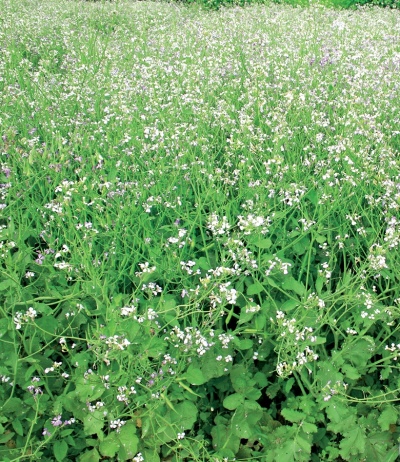
The Ivea variety is a good choice for obtaining seeds and feed needs.... It is a classic diploid plant with light green foliage and medium flowering time. 90% of the petals have a purple color, 10% are white, the root itself is also painted in a white tone. The productivity is high - 21.5 centners of seeds and 63 centners of dry weight per 1 ha.
The growing season lasts from 120 to 140 days, there is a decent immunity to the defeat of the cruciferous flea.
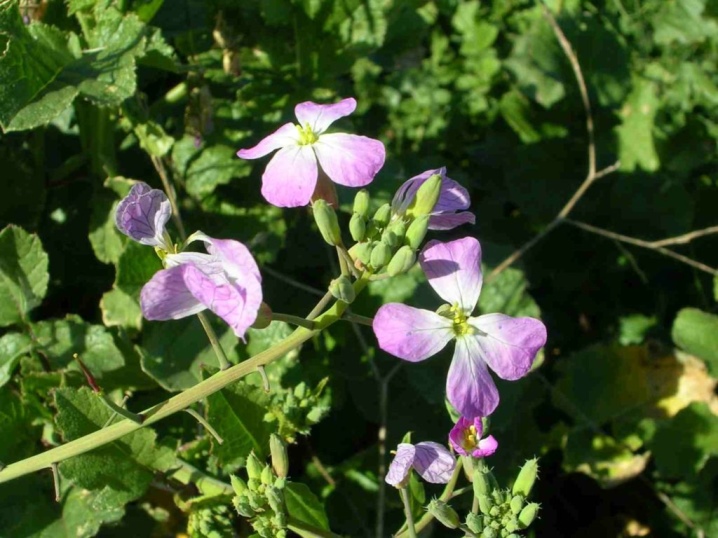
And also worthy of attention is the diploid variety "Snezhana"... This crop has green leaves with moderate division into lobes. Early flowering and the formation of pods of medium length are characteristic. The roots turn white, the green mass grows in the amount of 208-282 centners per hectare. The height of the stems ranges from 90 to 120 cm, the lower pod is attached at a height of 15-38 cm.
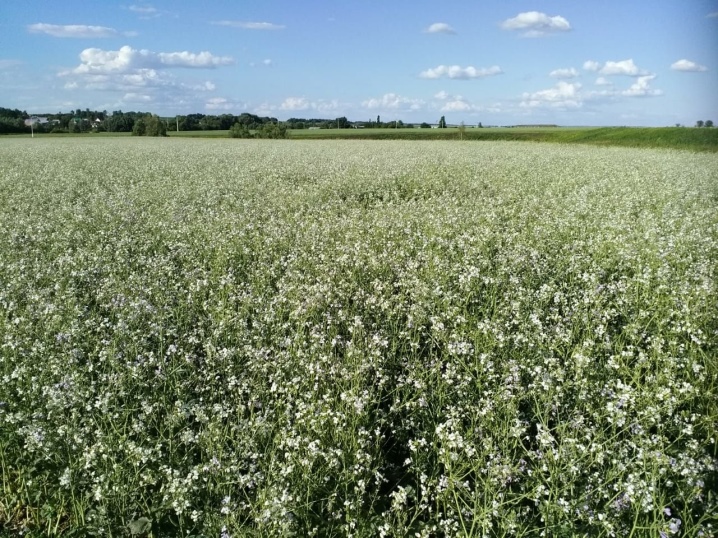
Sowing
Timing
The oil radish must be sown in rows. Seeds are laid from April to the first third of autumn. However, the crop planted in April is the most productive. If winter crops are then sown, it is required to quickly harvest green manure. There should be some time gap between the mowing of radish and sowing of new plants, otherwise the greens will not have time to rot.
Mowing must be completed before the seeds are ripe.... In the autumn months, the amount of sown material doubles compared to the spring. The land temperature is the reference point for spring planting. It should be stable at 10 degrees.
If the heating remains unstable for a long time, the process is not delayed, but the seeding rate is increased.
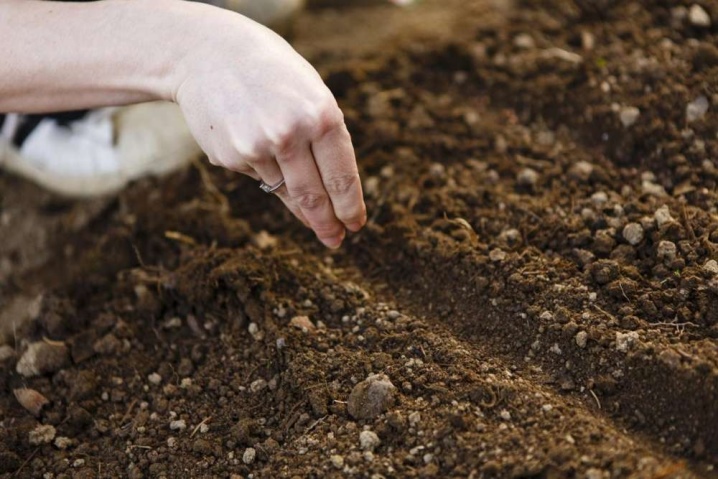
In the summer, sowing can be carried out at any convenient time. The plantings are watered when the sprouts begin to hatch. You can start working immediately after harvesting vegetables. Oil radish is a good precursor for:
- cucumbers;
- strawberries;
- tomatoes;
- raspberries;
- peppers;
- potatoes.
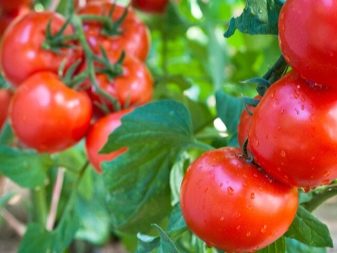

Seed consumption
It is imperative to deal with the usual seeding rate per 1 hectare.... If the radish is planted as green manure, then the consumption can be 0.2 kg per "weaving". This amount is provided for seed drilling. If sowing is carried out in bulk, this amount is increased to 0.35-0.4 kg. Consumption per hectare reaches 20-40 kg.

Technology
As already noted, oil radish is not too whimsical. It has almost no requirements for the composition of soils. However, it is still better to follow basic agricultural standards.... If the soil is too acidic, dolomite flour or slaked lime is added to it. Fertility can be increased by introducing organic components or mineral complexes.
Chemical improvement should not be limited. It is recommended to plow or dig up the area. Small areas are loosened with flat cutters. Plowing is preferred on heavy clay. Softer soils can simply be loosened.
Seeding is 4 cm; it is possible to increase the chances of success by adding the drug "Baikal EM-1" or "Shining-1".

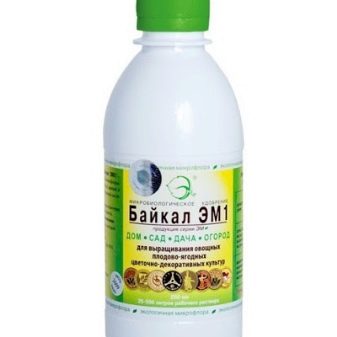
Care
When cultivating oil radish, it must be remembered that the seeds will germinate in 4-5 days. You can expect the appearance of the outlet already for 30-40 days. It will bloom in about 60 days after planting. During cultivation, this crop requires almost no care. However, in insufficiently fertile areas, the plant needs organic feeding.
It is more difficult to organize the industrial cultivation of oil-bearing radish. After sowing, the soil must be rolled up. Sometimes the territory is harrowed before the emergence of shoots.
Weed control is very important. The main danger is the cruciferous flea, which insecticidal formulations help to suppress.

Oil radish protection is also needed against cabbage moths. Peronosporosis and powdery mildew can pose a certain threat to it. This plant must be dug up before the onset of cold weather or left for a cold period. Refusal to dig is usually associated with late sowing. Leaving the radish for the winter, you can thereby retain snow and increase the accumulation of moisture, reducing soil freezing.
In spring, immediately after the snow melts, the surface of the crop will rot.This is a normal process in which the earth is saturated with useful components. Digging is usually carried out 45 days after sowing. If time is missed, the cut plants are composted so that there are no seeds left on the field. Digging is simplified after preliminary mowing of the crop; for manual work, the stems should be crushed with a shovel and repaired during digging.
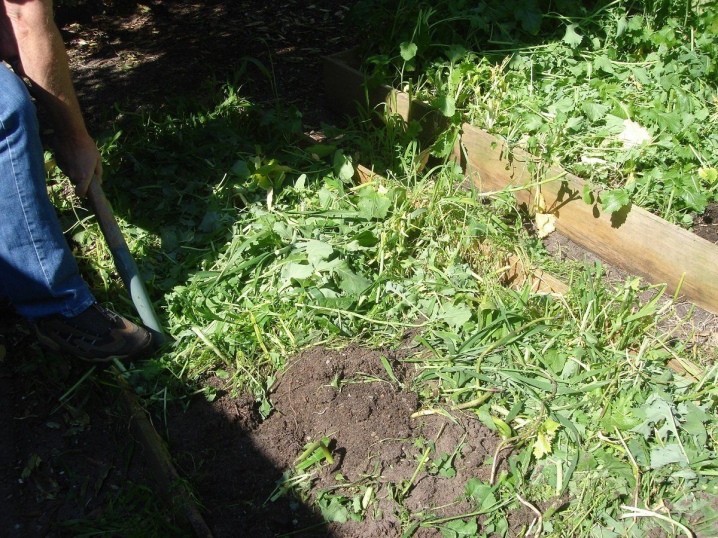
Cleaning
Mowing is carried out 30 days after germination... If the oil radish was planted as a green manure, it is necessary to harvest exactly one month before planting the vegetables. The procedure begins at the moment of budding. It must be finished before the pods form. When mowing the stems, it is required to leave cuts with a height of 6-7 cm in order to accelerate regrowth.
Sometimes the oil radish is harvested to produce seeds rather than green mass. This is already done when the pods are fully ripe. Finished seeds can differ in different varieties in light brown or red-brown colors. The collected seed should be laid out in paper or linen bags.
In some cases, oil radish is mown when it reaches a height of 20-30 cm. This approach allows you to get green mass three times during the growing season. When planning to plant winter crops, green manure is mowed 20-25 days before sowing seeds.
Moisturizing the plant mass allows you to get humus as efficiently as possible. Finally, the radish planted to prepare the plot for spring sowing should be harvested after the onset of early frosts.
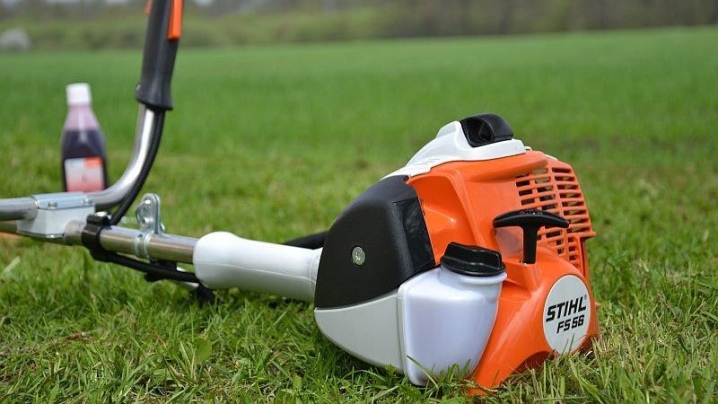
Application
One of the main applications of this crop is its cultivation as a green manure. The soil is enriched largely due to the powerful root system, which draws nutrients from the depths of the earth. The green mass turns out to be an excellent fertilizer, which contains both humus and an organic component. Optimal protection against erosion is provided, soils become looser, and their permeability to water and air increases.
It is also worth emphasizing the high phytosanitary properties of the oil radish. Its essential oil effectively drives away insects and suppresses dangerous fungi in a certain radius from the plantings.
After planting this plant, you can not be afraid of damage to the site by nematodes, potato scab and wireworms. By shading the surface, weeds are suppressed.
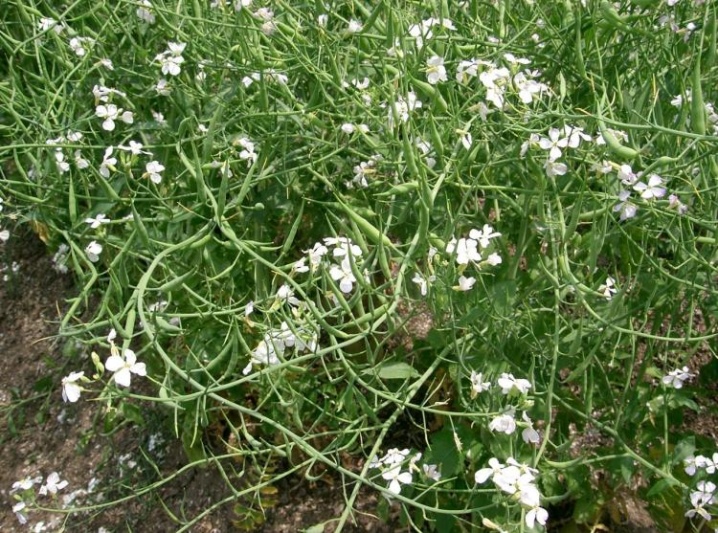
The role of oil radish as a fodder plant is important. Usually, it is possible to grow from 30 to 70 tons of green mass per 1 hectare. On average, 50 days pass between disembarkation and readiness for collection. Feeding the livestock is possible with both fresh and silage. It is also allowed to make haylage.
In addition to these options, oil radish can be used as:
- honey plant;
- raw materials for vitamin dishes (leaves are soaked for 60 minutes);
- cabbage soup component (shoots are used);
- source of trace amounts of unique essential oils;
- protein source for sports nutrition;
- pharmacological raw materials (essences produced from it are used for the production of vitamins and other drugs);
- a source of massage oils;
- a source of fuel oil for diesel engines;
- raw materials for obtaining anticorrosive emulsion.














The comment was sent successfully.